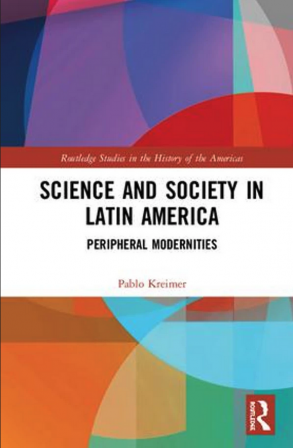Centers, Peripheries and Subordination. A View on Latin American Science

Science and Society in Latin America. Peripheral Modernities, by P. Kreimer, New York and London: Routledge, 2019, 270 p., $48.95 (pbk)/$160 (hbk), ISBN 978-1-03209326-0
There has been a renewed interest, in Science and Technology Studies in science developed outside Western Europe and North America. A new subfield of postcolonial studies of science and technology (Harding, 2011) has been consolidated. This perspective proposes that science developed in Southern or non-Euroamerican contexts is immersed in a “coloniality of power” (Mignolo, 2002). In post-colonial societies, these scholars argue, scientific theorization is confined to the use of Western philosophical and scientific tools, since native knowledge (magic, folklore, wisdom) are deemed by Northern rationality to be illegitimate.
Postcolonial studies of science and technology have amassed a large number of case studies, which document the interactions between Western science and traditional or indigenous beliefs, and the relationships of subordination, hybridization or complementarity established between developed and developing countries. Relevant work in the field includes studies on the pharmaceutical exploitation of native flora in Mexico (Hayden, 2003), uranium mining in Africa (Hecht, 2012) or the incorporation of the indigenous worldview into the political arena in the Andean region (de la Cadena, 2015).
These studies are useful to highlight asymmetries between countries that provide natural resources or ancestral knowledge and countries or corporations that industrialize and extract profit from them. However, by emphasizing the unequal relationships between the global North and South, this perspective may lead us to overlook the deep asymmetries within each of these regions. This is especially relevant in the global South. In Latin America, Africa and Asia, colonization processes unfold over very different temporalities and with different characteristics. To accommodate this diversity, authors such as Anderson and Adams (2008) propose to “creatively complicate” the dichotomic distinctions between center and periphery, dominated and subordinated, or traditional and modern. However, others might argue that adopting such a relativistic outlook may carry the risk of minimizing the pervasive asymmetries in resource availability, public authority, and power between science in the global North and science in the global South (see Dicenta, 2020 in this journal).
Cont’d.
LINK:
https://www.tandfonline.com/doi/full/10.1080/09505431.2021.1954153